9 July 2025
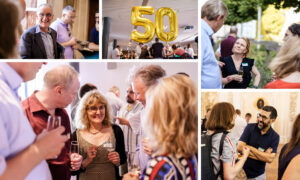
Together with institutional partners, alumni, and collaborators who have been part of EMBL scientific journey over the years, participants engaged in insightful discussions and reflected on EMBL Grenoble's key scientific milestones.
LAB MATTERS
19 February 2025

African scientists awarded the 2024 EMBL-UNESCO residencies share their experience in bioinformatics and virology, emphasising the power of connections and knowledge exchange.
CONNECTIONSPEOPLE & PERSPECTIVES
2025
connectionspeople-perspectives
12 February 2025
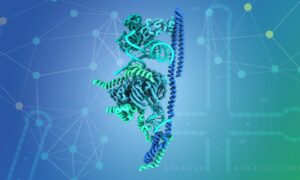
Researchers in the Galej Group at EMBL Grenoble have provided new insights into the structure of the minor spliceosome, an essential RNA-protein complex.
SCIENCE & TECHNOLOGY
21 January 2025
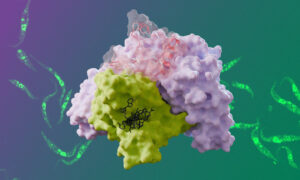
The Kowalinski group at EMBL Grenoble identified significant differences between the trypanosomal and human nuclear cap-binding complex, a key player in cellular RNA metabolism and a potential target for novel anti-parasitic drugs.
SCIENCE & TECHNOLOGY
20 January 2025
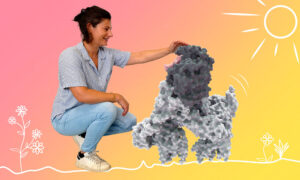
Sarah Gharbi, technician at EMBL Grenoble, talks about her favourite protein complex, which looks like a poodle. This is part of a series of stories about EMBL scientists and quirky, charming proteins that make them smile.
PEOPLE & PERSPECTIVES
4 December 2024
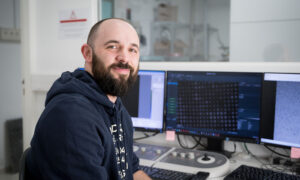
Romain Linares talks about his role in managing the cryo-electron microscopy facility at EMBL Grenoble, how he sees this technique evolving in the coming years, and his passion for astronomy.
PEOPLE & PERSPECTIVES
26 November 2024

EMBL Grenoble took part in a series of activities during the French Science Week, highlighting EMBL’s research and the TREC scientific expedition.
LAB MATTERS
12 November 2024
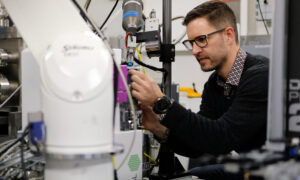
Nicolas Foos, a postdoctoral fellow at EMBL Grenoble, talks about the implementation of a new method for in situ serial crystallography developed during his ARISE fellowship.
SCIENCE & TECHNOLOGY
10 October 2024
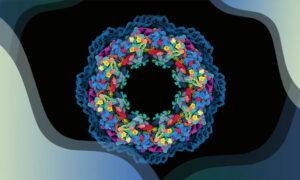
The function of biological molecules is intimately linked to their structure. In the 50 years since EMBL was established, its researchers and engineers have constantly provided leadership in structural biology research and services, resulting in many scientific breakthroughs and novel insights.
SCIENCE & TECHNOLOGY
9 October 2024
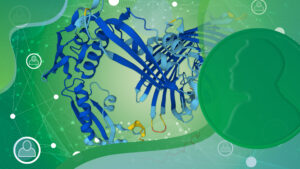
Creators of AI system AlphaFold receive 2024 Nobel Prize for Chemistry.
SCIENCE & TECHNOLOGY
2024
sciencescience-technology
19 August 2024
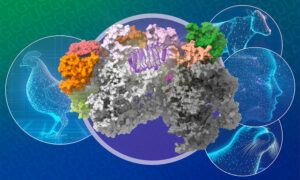
A new publication from the Cusack group sheds light on how a key avian influenza virus enzyme can mutate to allow the virus to replicate in mammals.
SCIENCE & TECHNOLOGY
12 August 2024
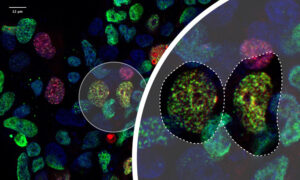
EMBL Grenoble researchers have come up with a new way to identify the targets of a crucial protein-modifying enzyme involved in diverse cellular processes.
SCIENCE & TECHNOLOGY
18 July 2024

ARISE fellow Melanie Schneider shares how she uncovered a new interest in research infrastructures and supporting discovery.
PEOPLE & PERSPECTIVES
2024
people-perspectivesperspectives
4 July 2024

What makes EMBL unique? Among many things, it’s the infinite curiosity of its community.
LAB MATTERS
2 July 2024
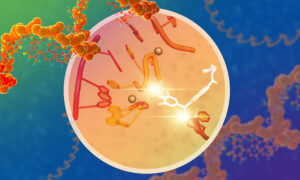
A new research paper published in Nature Communications lays the groundwork for the development of new drugs specific to genetic mutations or alterations responsible for the onset of tumours or genetic diseases.
SCIENCE & TECHNOLOGY
25 June 2024
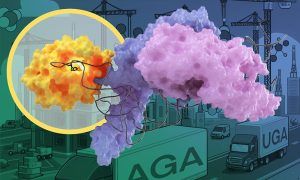
EMBL Grenoble’s Kowalinski Group analysed the structure of an enzyme responsible for modifying tRNA molecules to fine-tune protein production. They discovered that to distinguish almost identical, yet different, tRNA molecules, the enzyme uses help from another enzyme – a type of cooperation…
SCIENCE & TECHNOLOGY
12 June 2024
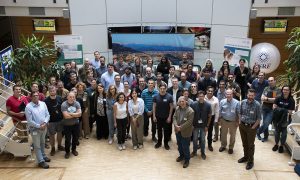
EMBL Grenoble and the ESRF hosted a workshop bringing together representatives from research and industry to discuss the ever-growing role of artificial intelligence in the field of structural biology.
CONNECTIONS
31 May 2024

Elise talks about her role in supporting EMBL Grenoble staff in daily human resources matters and the multiple events she’s been involved in to connect people, both at and outside of work.
PEOPLE & PERSPECTIVES
24 May 2024
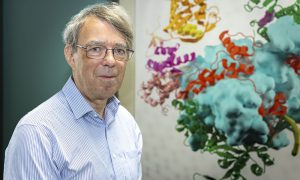
Stephen Cusack, world-renowned structural biologist and former Head of EMBL Grenoble, reflects on his early influences, his achievements, and the lessons he’s learned as he embarks on his next adventure
PEOPLE & PERSPECTIVES
4 April 2024
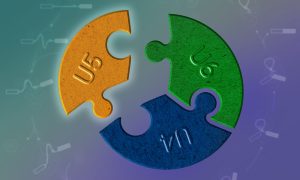
New study from the Galej group provides deeper structural insight into the assembly of a critical molecular machine, that removes non-coding information from genes during their expression.
SCIENCE & TECHNOLOGY
6 March 2024
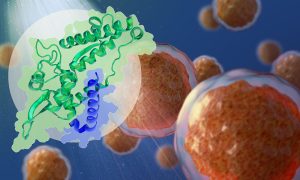
A new study from the Bhogaraju Group at EMBL Grenoble reveals how the cancer-promoting MAGE family of proteins bind to their targets, aiding the development of anti-cancer drugs that target these proteins.
SCIENCE & TECHNOLOGY
2024
sciencescience-technology
18 December 2023
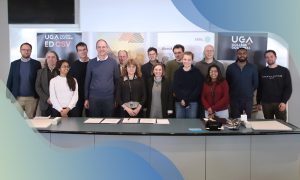
The two institutions celebrated the renewal of the partnership agreement initiated in 1999 for the delivery of a doctoral degree and a joint training certificate during UGA’s Welcome Day for doctoral students.
CONNECTIONSLAB MATTERS
2023
connectionslab-matters
13 December 2023
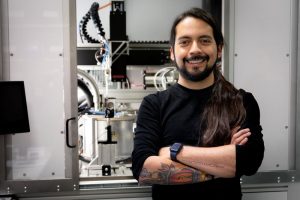
Victor Armijo, a mechatronics engineer at EMBL Grenoble, talks about his dream job, highlighted in EMBL’s exhibition ‘The World of Molecular Biology’.
LAB MATTERSPEOPLE & PERSPECTIVES
2023
lab-matterspeople-perspectives
15 November 2023
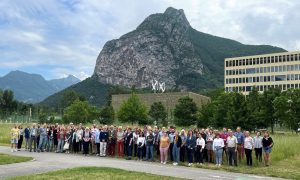
On this date (15 November), 21 years ago, the EMBL, ESRF, ILL, and IBS directors signed a memorandum of understanding to create the Partnership for Structural Biology (PSB) on the European Photon and Neutron (EPN) science campus in Grenoble.
CONNECTIONSLAB MATTERS
2023
connectionslab-matters
7 November 2023
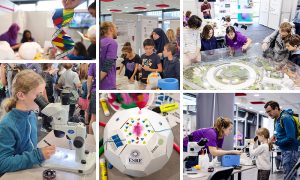
EMBL Grenoble was once again present for the science outreach event ‘Parvis des Sciences’ on Saturday 14 October 2023.
CONNECTIONSLAB MATTERS
2023
connectionslab-matters
26 October 2023
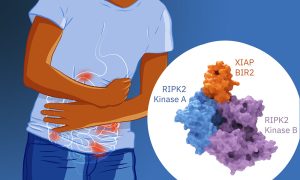
Researchers from the Cusack group at EMBL Grenoble provide structural insights on the XIAP/RIPK2 complex, a promising drug target to fight inflammatory bowel diseases.
SCIENCE & TECHNOLOGY
2023
sciencescience-technology
15 September 2023
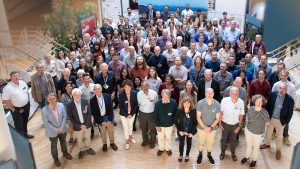
Researchers from across the globe have gathered in Grenoble to celebrate the remarkable lifelong scientific achievements of Stephen Cusack, the former head of EMBL Grenoble.
PEOPLE & PERSPECTIVES
2023
eventspeople-perspectives
15 September 2023
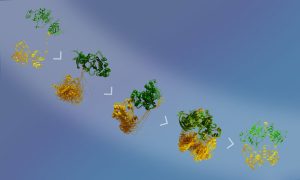
EMBL Grenoble and University of Geneva researchers shed light on the molecular activation of the MAP kinase p38α, the final ‘switch’ triggering the inflammatory response.
SCIENCE & TECHNOLOGY
2023
sciencescience-technology
17 July 2023

Rutuja Yelmar, predoctoral Fellow at EMBL Grenoble in the Kowalinski group, talks about her passion for research, daily inspiration, and the importance of collaboration in achieving her goals.
LAB MATTERSPEOPLE & PERSPECTIVES
2023
lab-matterspeople-perspectives
10 July 2023
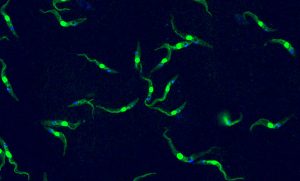
This single-celled organism the size of a dust particle is capable of causing deadly tropical diseases in both humans and livestock –Trypanosoma brucei, in an image by Luciano Dolce from EMBL.
LAB MATTERSSCIENCE & TECHNOLOGY
2023
lab-matterspicture-of-the-weekscience-technology
7 July 2023
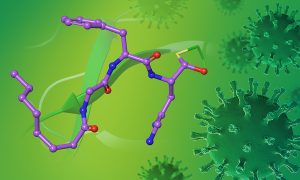
A collaboration between EMBL Grenoble and EBRIS scientists led to the characterisation of a new compound with promising activity against SARS-CoV-2 variants.
SCIENCE & TECHNOLOGY
2023
sciencescience-technology
31 May 2023
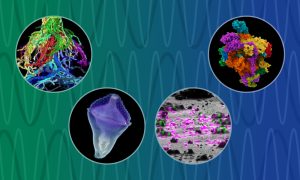
EMBL researchers and collaborators have begun an impactful innovation-development journey, thanks to a European Commission ‘IMAGINE’ grant.
CONNECTIONSLAB MATTERS
2023
connectionslab-matters
23 May 2023
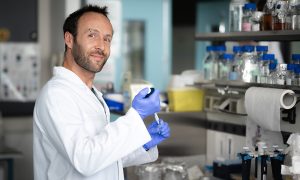
Martin Pelosse, Scientific Expert at EMBL Grenoble Eukaryotic Expression Facility, explains the platform’s role in supporting the site’s cutting-edge research activities and its future applications.
LAB MATTERSPEOPLE & PERSPECTIVES
2023
lab-matterspeople-perspectives
15 May 2023
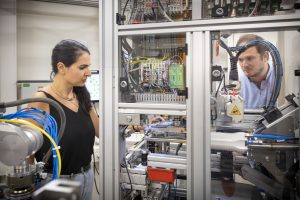
EMBL Grenoble technology teams provide a sneak peek into their latest collaborative project in structural biology services: the complete automation of an integral step in X-ray crystallography.
EMBLetc
20 April 2023

Angelika Thomasson, administrative assistant at EMBL Grenoble, talks about her role in supporting her colleagues in organising events and travels, what she enjoys about EMBL, and which famous female scientist she would like to have coffee with.
LAB MATTERSPEOPLE & PERSPECTIVES
2023
lab-matterspeople-perspectives
27 March 2023
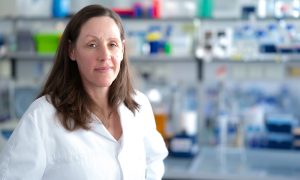
Audrey Spielmann, Lab Support Manager, talks about her role in supporting the research done at EMBL Grenoble.
LAB MATTERSPEOPLE & PERSPECTIVES
2023
lab-matterspeople-perspectives
20 March 2023

Together with his team, Gergely Papp pushes the frontiers of technology development in the field of structural biology.
LAB MATTERSPEOPLE & PERSPECTIVES
2023
lab-matterspeople-perspectives
3 March 2023
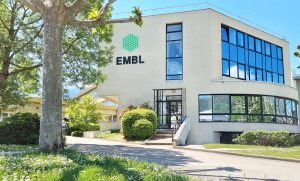
EMBL’s French site was highlighted in a short film presenting its expertise in structural biology research and services.
CONNECTIONSLAB MATTERS
2023
connectionslab-matters
1 March 2023
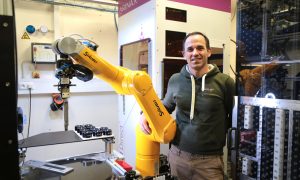
Physicists, engineers and robotics experts work together in EMBL Hamburg’s Instrumentation Team to design instruments that support structural biology research. The team has finished a transfer robot that facilitates automated handling of protein crystals with care and precision. This will help…
LAB MATTERSSCIENCE & TECHNOLOGY
2023
lab-mattersscience-technology
16 February 2023
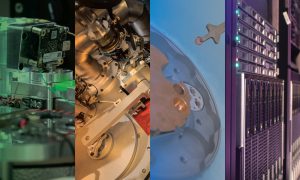
EMBL is one of the partners of this project that aims to accelerate drug discovery and development, bringing in expertise from EMBL Grenoble and EMBL-EBI.
LAB MATTERSSCIENCE & TECHNOLOGY
2023
lab-mattersscience-technology
7 February 2023
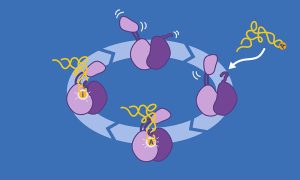
EMBL Grenoble scientists provide new insights into the function of an essential RNA editing enzyme.
SCIENCE & TECHNOLOGY
2023
sciencescience-technology
9 January 2023
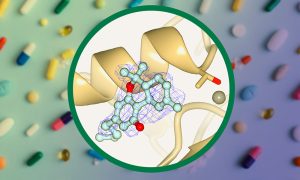
EMBL Grenoble researchers have investigated the interaction between THC and some proteins it might bind to. In a recent study, they showed in vitro that THC inhibits an important human enzyme called autotaxin.
SCIENCE & TECHNOLOGY
2023
sciencescience-technology
12 December 2022
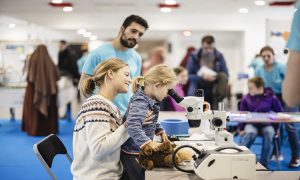
In October 2022, EMBL Grenoble participated in the annual science outreach event Parvis des Sciences, organised by the GIANT campus under the umbrella of the French science week – La Fête de la science.
CONNECTIONSLAB MATTERS
2022
connectionslab-matters
1 December 2022
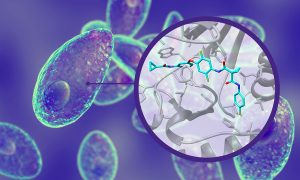
Recent studies supported by EMBL Grenoble’s expertise in structural biology research and scientific services have identified Altiratinib as a potential drug to stop toxoplasmosis infection and opened up treatment options against malaria.
SCIENCE & TECHNOLOGY
2022
sciencescience-technology
3 November 2022
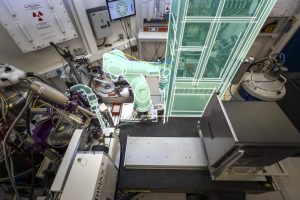
Researchers and engineers have integrated a CrystalDirect harvester into the fully automated beamline MASSIF-1, a unique combination of structural biology technologies that is now open to external academic users.
LAB MATTERSSCIENCE & TECHNOLOGY
2022
lab-mattersscience-technology
20 October 2022
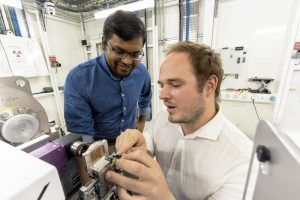
The recent construction of the new ID29 beamline in Grenoble is pioneering a new way of doing experiments in time-resolved crystallography and opening up technology transfer possibilities
LAB MATTERSSCIENCE & TECHNOLOGY
2022
lab-mattersscience-technology
23 June 2022

Former chair of EMBL Council to take office as the next President of the Max Planck Society in June 2023.
EMBL ANNOUNCEMENTS
2022
alumniembl-announcements
27 April 2022

Professor Kristina Djinović-Carugo has been appointed as the next head of EMBL Grenoble. She will join EMBL in July from the Max Perutz Laboratories at the University of Vienna, where she is currently Head of the Department of Structural and Computational Biology and full Professor of Structural…
EMBL ANNOUNCEMENTSLAB MATTERS
2022
embl-announcementslab-matters
27 April 2022
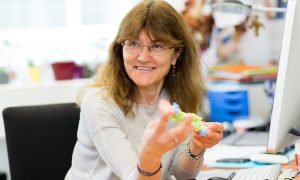
Slovenian structural biologist Kristina Djinović-Carugo will join EMBL in July as the new Head of EMBL Grenoble. We spoke to her about her background, research interests, and plans for EMBL Grenoble.
LAB MATTERSPEOPLE & PERSPECTIVES
2022
lab-matterspeople-perspectives
18 January 2022
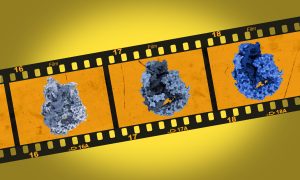
The Galej group at EMBL Grenoble has recently obtained high resolution snapshots of a crucial step in RNA splicing involving the U2 snRNP complex, a crucial component of the human spliceosome.
SCIENCE & TECHNOLOGY
2022
sciencescience-technology
22 December 2021

The memorandum of understanding (MoU) signed between EMBL and the Institute for Advanced Biosciences (IAB) a year ago has already catalysed new grants for joint research projects related to cancer and infection biology, thereby deepening collaborative activities.
CONNECTIONSLAB MATTERS
2021
connectionslab-matters
20 December 2021
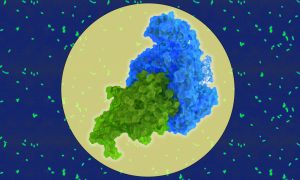
Using cryo-EM and structural biology techniques, EMBL researchers have shown how two proteins of Legionella pneumophila interact. This finding sheds light on a mechanism critical to the infection process and could lead to the development of new drugs to treat pneumonia.
SCIENCE & TECHNOLOGY
2021
sciencescience-technology
9 December 2021

EMBL and the French National Centre for Scientific Research (CNRS) signed a memorandum of understanding.
CONNECTIONSLAB MATTERS
2021
connectionslab-matters
2 December 2021
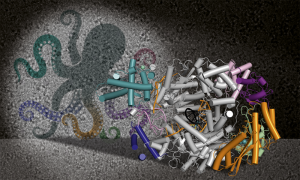
EMBL structural biology is part of an international collaboration addressing zoonotic disease caused by Lassa virus.
SCIENCE & TECHNOLOGY
2021
sciencescience-technology
10 November 2021
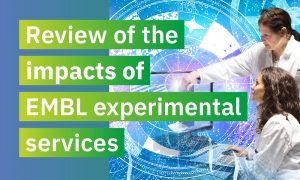
Independent impact review finds EMBL experimental services are ‘critical’ for research and endorses EMBL as a world-class service provider for academia and industry.
LAB MATTERSSCIENCE & TECHNOLOGY
2021
lab-mattersscience-technology
8 October 2021
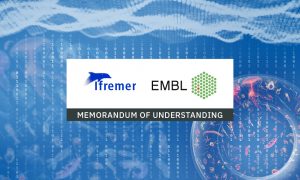
The two organisations have signed a memorandum of understanding to support scientific cooperation in the exploration of coastal and oceanic ecosystems.
CONNECTIONSLAB MATTERS
2021
connectionslab-matters
7 October 2021

EMBL will host a conference to look at the state of the pandemic, lessons learned, and ways to improve pandemic preparedness. Here’s a sneak peek into what promises to be another interesting and informative EMBL conference.
SCIENCE & TECHNOLOGY
2021
eventsscience-technology
10 August 2021
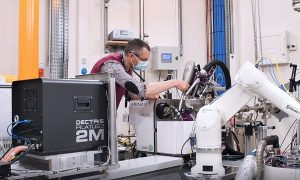
MASSIF-1, run jointly by EMBL Grenoble and the ESRF, is a beamline for macromolecular crystallography. It is used by the research community to study the 3D structure of proteins, which is important for drug development.
LAB MATTERSSCIENCE & TECHNOLOGY
2021
lab-mattersscience-technology
8 July 2021

We all like a story about rediscovering treasures, right? Well, that’s just what happened recently at EMBL Grenoble!
PEOPLE & PERSPECTIVES
2021
alumnipeople-perspectives
8 June 2021
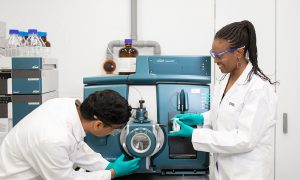
EMBL is conducting an Impact Assessment of our experimental services to understand the value these services have for our external user community. If you have accessed EMBL experimental services at one or more of our facilities to support the conduct of your research, we would like to hear from you.
LAB MATTERS
10 May 2021
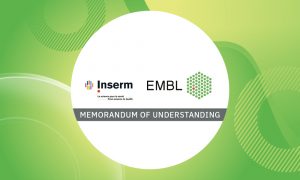
A memorandum of understanding has been signed between EMBL and Inserm to strengthen their scientific cooperation.
CONNECTIONSLAB MATTERS
2021
connectionslab-matters
30 April 2021
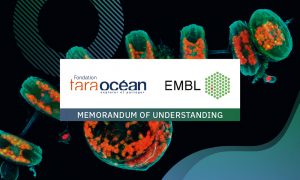
The EMBL-Tara Ocean Foundation collaboration will expand opportunities to jointly explore molecular connections between ocean and humankind.
EMBL ANNOUNCEMENTSLAB MATTERS
2021
embl-announcementslab-matters
26 April 2021

A memorandum of understanding has been signed between EMBL, Collège de France, and the Institute of Biology of the Ecole Normale Supérieure (IBENS).
CONNECTIONSLAB MATTERS
2021
connectionslab-matters
13 April 2021
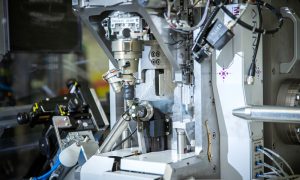
Florent Cipriani, who recently retired as Head of the Instrumentation Team after a long career at EMBL Grenoble, is one of the pioneers of instrumentation development in this field.
LAB MATTERSSCIENCE & TECHNOLOGY
2021
lab-mattersscience-technology
6 April 2021

This MoU formalises a 15-year collaboration between the two institutes and strengthens Grenoble as a European research centre in the life sciences.
EMBL ANNOUNCEMENTSLAB MATTERS
2021
embl-announcementslab-matters
9 March 2021
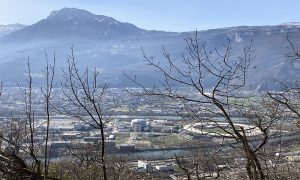
This photo shows the European Photon and Neutron (EPN) science campus where EMBL Grenoble is located. A delightful spring breeze in the air melts the last remaining patches of snow in the mountains.
LAB MATTERS
2021
lab-matterspicture-of-the-week
9 February 2021

The regular structures of crystals are a source of inspiration and fascination to us humans. While the crystals in this picture were not grown in nature, but instead by Petra Drncova from EMBL Grenoble, they share the same attributes as those found in nature.
SCIENCE & TECHNOLOGY
2021
picture-of-the-weekscience-technology
5 February 2021
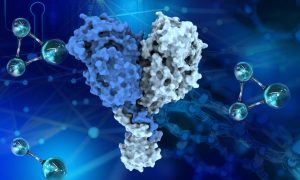
A new paper from the Galej group at EMBL Grenoble describes the structure of key parts of the Integrator complex, involved in gene expression.
SCIENCE & TECHNOLOGY
2021
sciencescience-technology
12 January 2021
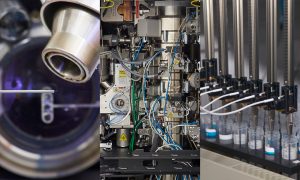
EMBL’s sites in Grenoble, Hamburg, and Heidelberg form the newest Instruct Centre. The new centre offers users access to a broad range of state-of-the-art facilities.
CONNECTIONSLAB MATTERS
2021
connectionslab-matters
15 December 2020
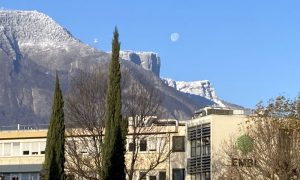
The first snowflakes have fallen on the Vercors Mountains, right behind the EMBL Grenoble building, and an almost full moon is showing up during a sunny morning.
LAB MATTERS
2020
lab-matterspicture-of-the-week
2 December 2020
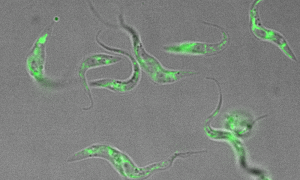
Members of the EMBL community are working to improve our understanding of the parasites that cause malaria and sleeping sickness
SCIENCE & TECHNOLOGY
2020
sciencescience-technology
19 October 2020

EMBL and CIML have signed a memorandum of understanding that will open up new scientific opportunities.
CONNECTIONSLAB MATTERS
2020
connectionslab-matters
3 September 2020

Maria Bernabeu and Wojciech Galej have each been awarded €1.5 million to research malaria and pre-mRNA splicing, respectively.
EMBL ANNOUNCEMENTSLAB MATTERS
2020
embl-announcementslab-matters
25 August 2020
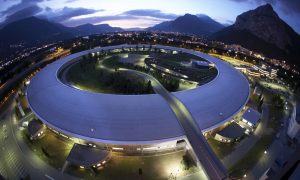
The beamlines run jointly by EMBL Grenoble and the ESRF reopen today, unveiling significant upgrades that exploit the brand new fourth generation ESRF synchrotron source.
EMBL ANNOUNCEMENTS
2020
embl-announcementsscience
8 July 2020

The CrystalDirect® technology, combined with the web-based CRIMS software enable a fully automated, remote-controlled protein-to-structure pipeline.
LAB MATTERS
17 June 2020
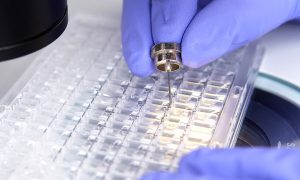
While global research on coronaviruses has shed light on the function of many SARS-CoV-2 proteins, the role of some crucial components remains unknown. Researchers at EMBL Grenoble will use a range of structural biology methods to try to solve some of the puzzles of the molecular mechanics of…
SCIENCE & TECHNOLOGY
2020
sciencescience-technology
9 June 2020
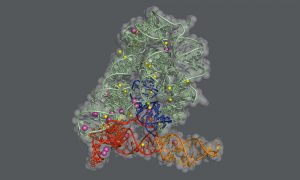
Researchers in the Marcia group at EMBL Grenoble and the De Vivo lab at the Italian Institute of Technology in Genoa have obtained some of the most detailed ever snapshots of the splicing process in systems known as group II self-splicing introns. The new insights will help scientists to develop…
SCIENCE & TECHNOLOGY
2020
sciencescience-technology
27 May 2020
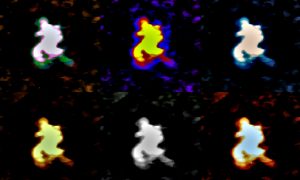
Researchers from EMBL Grenoble have developed a way to visualise large RNAs in 3D using biochemical and structural biology techniques.
SCIENCE & TECHNOLOGY
2020
sciencescience-technology
27 May 2020
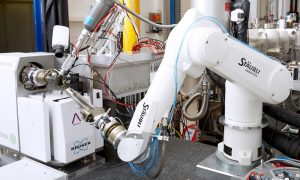
EMBL and the European Synchrotron Radiation Facility (ESRF) restart the activities of the Joint Structural Biology Group in Grenoble to support coronavirus-related projects. A new initiative will allow users to be granted access to the High-Throughput Crystallisation (HTX) lab at EMBL and to a…
CONNECTIONS
5 May 2020
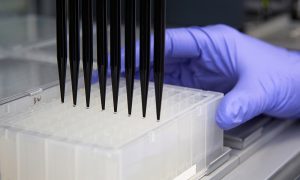
By re-opening the High-Throughput Crystallisation (HTX) lab at EMBL Grenoble, EMBL is supporting structural biology projects to respond to the health threats posed by coronaviruses.
SCIENCE & TECHNOLOGY
2020
sciencescience-technology
30 April 2020
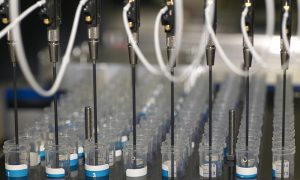
The Marquez Team has restarted operations at the High-Throughput Crystallisation (HTX) lab at EMBL Grenoble. The team has developed a fully automated protein-to-structure pipeline, which can be operated remotely and provides virtual access to the facilities.
SCIENCE & TECHNOLOGY
2020
sciencescience-technology
29 April 2020
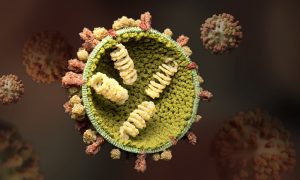
The infectious disease commonly known as flu is caused by the influenza virus. It spreads around the world in seasonal outbreaks, causing millions of infections and hundreds of thousands of deaths each year. Stephen Cusack, Head of EMBL Grenoble, has been studying different aspects of the influenza…
SCIENCE & TECHNOLOGY
2020
sciencescience-technology
10 March 2020

This image, taken by Raphaël Cohen-Aberdam from the Cipriani team, shows that the weather for the Grenoble Lab Ski Day 2020 was just perfect!
LAB MATTERS
2020
lab-matterspicture-of-the-week
19 December 2019
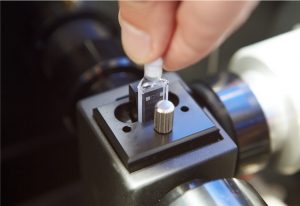
EU funding for iNEXT-Discovery consortium unlocks key technologies for structural biology
EMBL ANNOUNCEMENTSLAB MATTERS
2019
embl-announcementslab-matters
13 December 2019
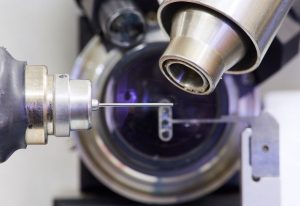
EMBL is now a member of the Instruct-ERIC organisation
LAB MATTERS
2019
announcementslab-matters
29 November 2019
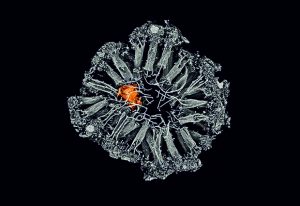
Exploring the diverse routes by which EMBL scientists are driving forward neurobiology
SCIENCE & TECHNOLOGY
2019
sciencescience-technology
28 October 2019
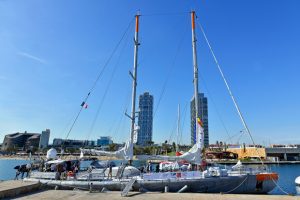
Highlights from the Tara stopovers in Rome, Marseille, and Barcelona
EMBL ANNOUNCEMENTS
2019
embl-announcementsevents
26 September 2019

From 27–30 September, Tara will be docked in the port of Marseille, France’s second largest city.
EMBL ANNOUNCEMENTS
2019
embl-announcementsevents
17 September 2019
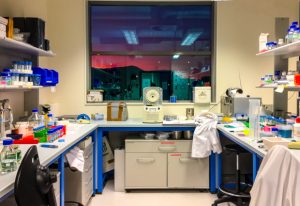
It’s evening and the Sun is setting over the mountains surrounding the city of Grenoble – home to one of EMBL’s six sites – bathing the mountaintops in fiery red light. The Picture of the Week, taken by Zuzanna Kaczmarska shows the lab she worked in after a long and busy day. Bottles…
LAB MATTERS
2019
lab-matterspicture-of-the-week
16 September 2019
What: A press conference on the new Tara mission on microplastics and the Tara Ocean Foundation’s cooperation with EMBL. The press briefing will be followed by a visit to the schooner.When: Friday 27 September at 13:00 CEST.Where: The press conference will be held on the Tara…
EMBL ANNOUNCEMENTS
2019
embl-announcementsevents
5 September 2019
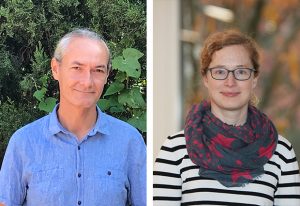
September’s alumni event in Marseille will coincide with a Tara stopover
PEOPLE & PERSPECTIVES
2019
alumnipeople-perspectives
20 August 2019

MEG3 adopts a complex three-dimensional structure to fulfil its tumour suppressor function.
SCIENCE & TECHNOLOGY
2019
sciencescience-technology
22 July 2019
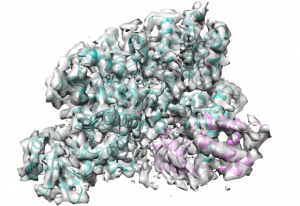
SidJ enforces a unique modification on human proteins and helps legionella grow.
SCIENCE & TECHNOLOGY
2019
sciencescience-technology
28 June 2019
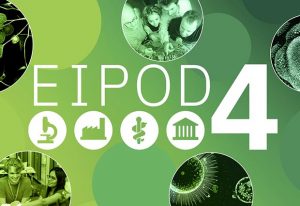
EIPOD4 will prepare researchers for the increasing interdisciplinarity of scientific career paths
EMBL ANNOUNCEMENTSLAB MATTERS
2019
embl-announcementslab-matters
3 June 2019
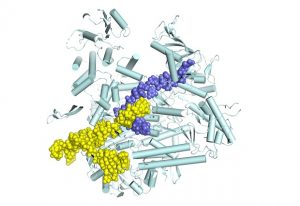
Snapshots of the flu virus replication machine in action
SCIENCE & TECHNOLOGY
2019
sciencescience-technology
31 May 2019
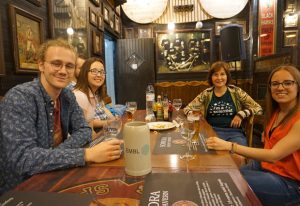
EMBL got together with the global science festival Pint of Science to explain and celebrate science.
LAB MATTERS
8 March 2019

New group leader at EMBL Grenoble is investigating the cellular role of melanoma antigens
SCIENCE & TECHNOLOGY
2019
sciencescience-technology
2 January 2019

On January 1 2019, Edith Heard takes up the position of EMBL’s Director General
LAB MATTERSPEOPLE & PERSPECTIVES
2019
lab-matterspeople-perspectives
15 October 2018
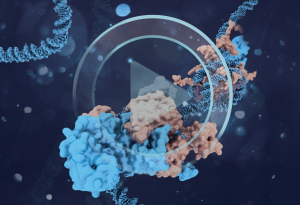
EMBL scientists gain mechanistic insights into how cellular signalling controls gene regulation
SCIENCE & TECHNOLOGY
2018
sciencescience-technology
29 August 2018
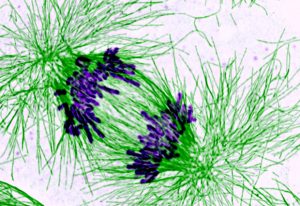
EMBL scientists discover how a component of the cohesin ring binds DNA
SCIENCE & TECHNOLOGY
2018
sciencescience-technology
2 August 2018

Discover how EMBLers across all sites share their passion for science
LAB MATTERSPEOPLE & PERSPECTIVES
2018
lab-matterspeople-perspectives
26 June 2018
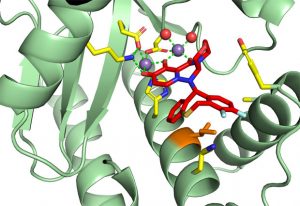
EMBL scientists investigate how influenza virus responds to new drug treatment
SCIENCE & TECHNOLOGY
2018
sciencescience-technology
1 June 2018
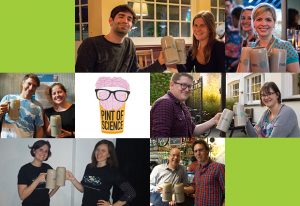
EMBL and Pint of Science join forces to entertain and educate
LAB MATTERS
23 February 2018

Discover the past lives and journeys that brought people to EMBL
LAB MATTERSPEOPLE & PERSPECTIVES
2018
lab-matterspeople-perspectives
29 January 2018
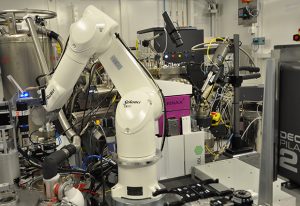
EMBL instrumentation teams adapting tech to run biological experiments on the synchrotron after its upgrade
LAB MATTERSSCIENCE & TECHNOLOGY
2018
lab-mattersscience-technology
4 January 2018
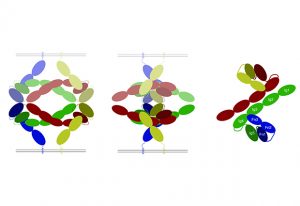
EMBL researchers solve a decades-long debate on a key process for brain and embryo-development
SCIENCE & TECHNOLOGY
2018
sciencescience-technology
21 December 2017

A look back at some of the most read stories on EMBL’s news website this year
LAB MATTERS
20 December 2017
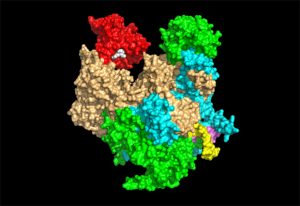
ERC grantee Stephen Cusack shares his vision for the next ten years
SCIENCE & TECHNOLOGY
2017
sciencescience-technology
7 December 2017
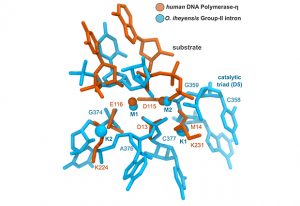
EMBL scientists superimpose structures of two-metal-ion enzymes and reveal new potential drug targets
SCIENCE & TECHNOLOGY
2017
sciencescience-technology
4 December 2017

New group leader based in Grenoble aims to unveil the mechanisms of RNA editing
PEOPLE & PERSPECTIVES
2017
people-perspectivesscience
29 November 2017
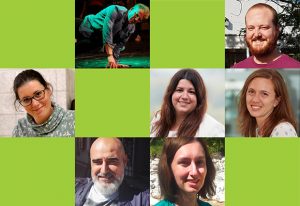
EMBLers across all sites share how their curiosity about the world shapes their everyday life
LAB MATTERS
10 November 2017
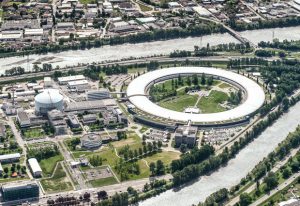
EMBL and the European synchrotron ESRF extend their Joint Structural Biology Group
CONNECTIONSLAB MATTERS
2017
connectionslab-matters
10 November 2017
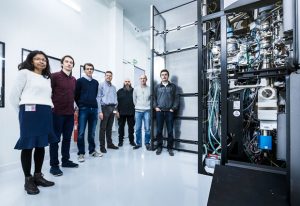
As a new cryo-EM facility is inaugurated, EMBL’s Michael Hons describes his role in the project
SCIENCE & TECHNOLOGY
2017
sciencescience-technology
11 July 2017
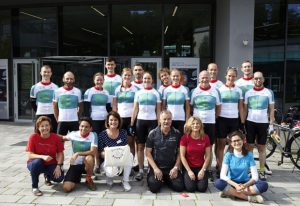
EMBL’s cycling team complete epic journey to raise money for Heidelberg’s children’s hospital
LAB MATTERS
24 May 2017

People across EMBL’s sites reflect on the ways they perceive their world
LAB MATTERSPEOPLE & PERSPECTIVES
2017
lab-matterspeople-perspectives
16 February 2017
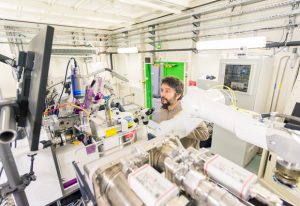
Beamline BM14 in Grenoble shuts down, continues collaboration with India
LAB MATTERSSCIENCE & TECHNOLOGY
2017
lab-mattersscience-technology
25 January 2017

New group leader Wojciech Galej investigates RNA-protein complexes involved in gene expression
PEOPLE & PERSPECTIVES
2017
people-perspectivesscience
21 December 2016
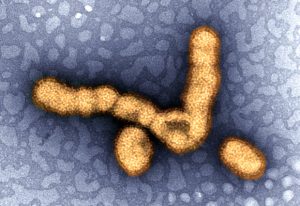
Understanding how the flu virus steals host RNA offers hope of new drugs
SCIENCE & TECHNOLOGY
2016
sciencescience-technology
14 December 2016
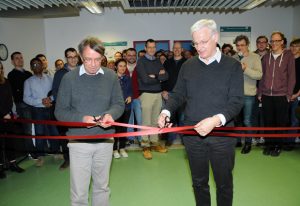
A new crystallography platform in Grenoble opens the door to new technological developments
EMBL ANNOUNCEMENTSLAB MATTERS
2016
embl-announcementslab-matters
23 November 2016
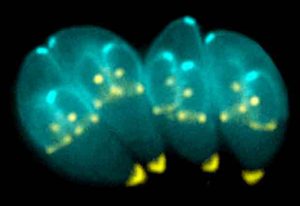
Parasite’s method of rewiring our immune response leads to novel tool for drug tests
SCIENCE & TECHNOLOGY
2016
sciencescience-technology
11 November 2016
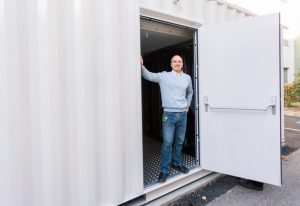
Upgraded server room is ready to take the heat at EMBL Grenoble
LAB MATTERS
13 September 2016
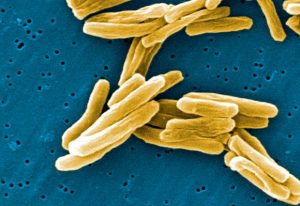
EMBL researchers help to design a lead compound active against four different pathogens
SCIENCE & TECHNOLOGY
2016
sciencescience-technology
13 September 2016
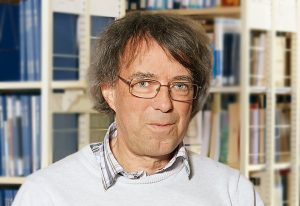
Stephen Cusack looks back on the early days of his collaboration with Anacor developing anti-infectives
LAB MATTERSPEOPLE & PERSPECTIVES
2016
lab-matterspeople-perspectives
13 September 2016
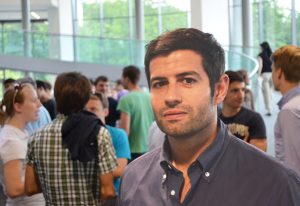
Andrés Palencia on the design of compounds that may help fight drug-resistant TB and more
LAB MATTERSPEOPLE & PERSPECTIVES
2016
lab-matterspeople-perspectives
30 August 2016

Turning the spotlight on the diverse universe of EMBL’s 200-strong postdoc community
LAB MATTERSPEOPLE & PERSPECTIVES
2016
lab-matterspeople-perspectives
30 August 2016
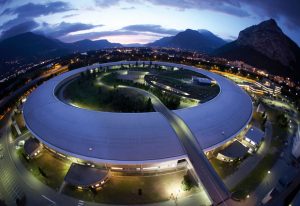
EMBL and ESRF scientists and mechanics work together on upgrade for one of Europe’s big X-ray sources
CONNECTIONS
16 June 2016
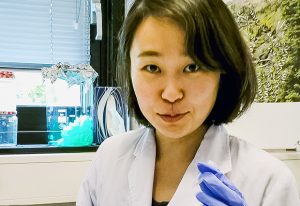
Studying at EMBL in Grenoble helps Japanese postdoc see her native country through different eyes
SCIENCE & TECHNOLOGY
2016
sciencescience-technology
7 June 2016

Grenoble-based Partnership for Structural Biology (PSB) renewed for five more years
CONNECTIONSLAB MATTERS
2016
connectionslab-matters
10 May 2016
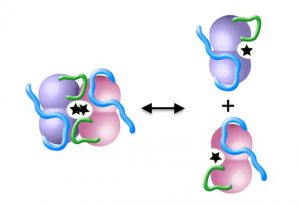
Unexpected results: structure of DAPK enzyme reveals dual-purpose loop
SCIENCE & TECHNOLOGY
2016
sciencescience-technology
21 April 2016
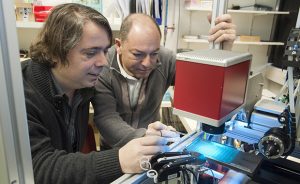
Florent Cipriani talks about his passion for developing beamline instrumentation
SCIENCE & TECHNOLOGY
2016
sciencescience-technology
21 April 2016
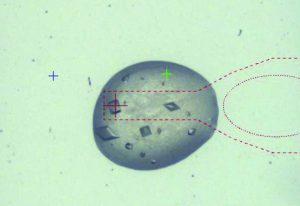
CrystalDirect, developed at EMBL, automates crystal preparation for X-ray analysis
SCIENCE & TECHNOLOGY
2016
sciencescience-technology
7 March 2016
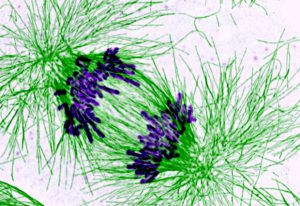
Structural insights into how cohesin keeps DNA together during the cell cycle
SCIENCE & TECHNOLOGY
2016
sciencescience-technology
28 January 2016

Former Head of EMBL Grenoble passed away on 21 January 2016 at the age of 89
PEOPLE & PERSPECTIVES
2016
alumnipeople-perspectives
17 December 2015
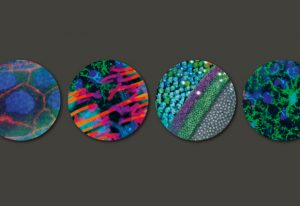
With 28 conferences and 57 courses, 2016 will be EMBL’s most eventful year to date.
CONNECTIONS
25 November 2015

Compelling short stories that shine light on the life and work of EMBL staff.
LAB MATTERSPEOPLE & PERSPECTIVES
2015
lab-matterspeople-perspectives
22 September 2015
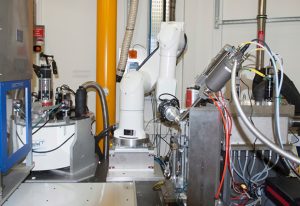
MASSIF-1 processes its 10,000th crystal, less than one year after the beamline became operational.
SCIENCE & TECHNOLOGY
2015
sciencescience-technology
24 August 2015
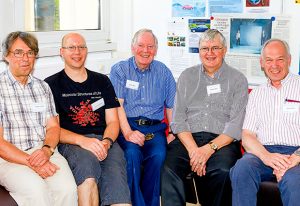
Andrew Miller, first head of EMBL Grenoble, reflects on four decades at the Outstation.
PEOPLE & PERSPECTIVES
2015
alumnipeople-perspectives
24 August 2015
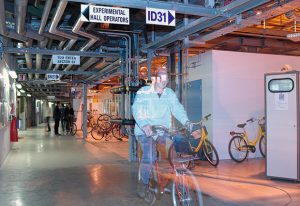
Alumni Reuben Leberman, Jeremy Smith, Elena Seiradake, and Winfried Weissenhorn share their stories.
PEOPLE & PERSPECTIVES
2015
alumnipeople-perspectives
13 July 2015
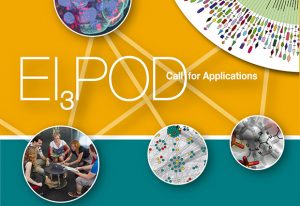
EI3POD: flagship interdisciplinary postdoc programme opens its doors to academia and industry.
EMBL ANNOUNCEMENTSLAB MATTERS
2015
embl-announcementslab-matters
9 July 2015
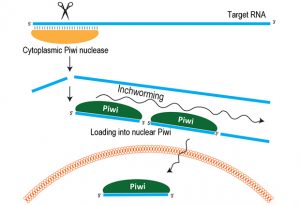
European team identify mechanism for producing piRNAs that silence jumping genes in germline cells.
SCIENCE & TECHNOLOGY
2015
sciencescience-technology
18 June 2015
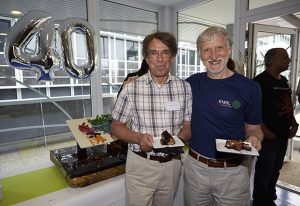
Staff, alumni, partners and more meet at EMBL Grenoble to celebrate Outstation's 40th anniversary.
LAB MATTERS
15 June 2015

EMBL’s new open access policy aims to make EMBL research widely and freely accessible.
LAB MATTERS
21 May 2015
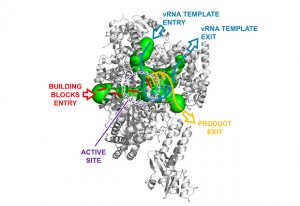
Detailed structural study shows distantly related viruses share a common machinery for replication.
SCIENCE & TECHNOLOGY
2015
sciencescience-technology
5 May 2015

Stephen Cusack, head of EMBL Grenoble, among 47 new Royal Society fellows.
LAB MATTERS
6 March 2015
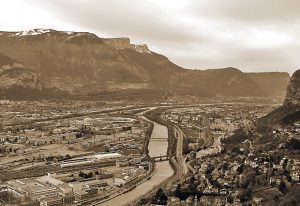
EMBL Grenoble celebrates 40 years with a symposium for staff, alumni and facility users on 4–5 June.
LAB MATTERS
19 February 2015
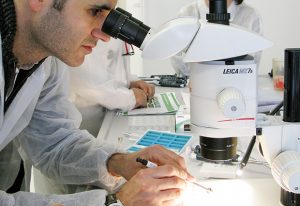
First LearningLAB of 2015 makes science of protein structure crystal clear for 22 teachers.
LAB MATTERS
27 January 2015
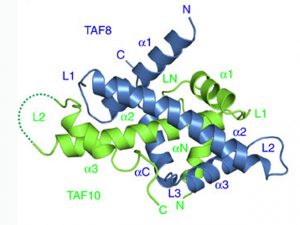
First experimental proof that a key cellular machine forms by uniting pre-assembled modules.
SCIENCE & TECHNOLOGY
2015
sciencescience-technology
9 January 2015
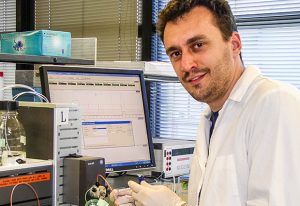
New group leader Marco Marcia aims to broaden horizons while mapping molecules.
SCIENCE & TECHNOLOGY
2015
sciencescience-technology
28 November 2014
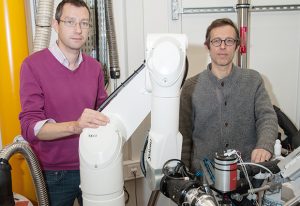
In two months, 2.3 million diffraction images collected on new, fully automated ESRF/EMBL beamline.
SCIENCE & TECHNOLOGY
2014
sciencescience-technology
19 November 2014

First complete picture of flu virus polymerase. A story of two decades of blood, sweat and sneezes.
SCIENCE & TECHNOLOGY
2014
sciencescience-technology
4 November 2014
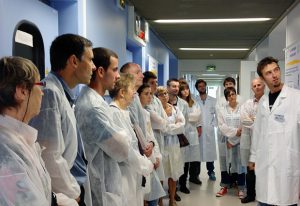
Open Day in Grenoble celebrates crystallography for the Fête de la Science.
SCIENCE & TECHNOLOGY
2014
eventsscience-technology
17 October 2014
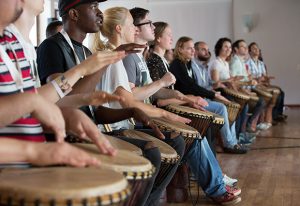
Drumming, drama, dancing and discovery in a diary of art and science event, Roche Continents.
LAB MATTERS
20 August 2014
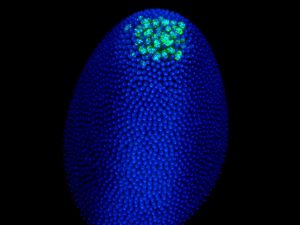
Vasa protein preserves pieces of 'enemy' DNA to help protect the genes of future generations.
SCIENCE & TECHNOLOGY
2014
sciencescience-technology
31 July 2014
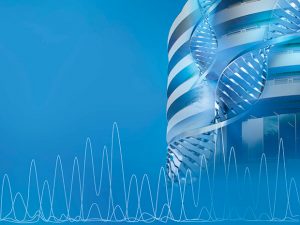
"Thank you, EMBL, for changing my life" – reunion celebrates great science and great scientists
LAB MATTERS
1 July 2014

As the Lab turns 40, staff and alumni share 40 things that make EMBL, EMBL
LAB MATTERS
1 July 2014
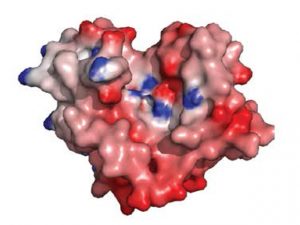
Surprising protein from a flu-like virus is 10 000th ESRF structure
SCIENCE & TECHNOLOGY
2014
sciencescience-technology
1 July 2014

As the Lab turns 40, staff and alumni share 40 things that make EMBL, EMBL
LAB MATTERS
1 July 2014

Scientists from EMBL's five sites reflect on the opportunities and challenges that might lie ahead
LAB MATTERS
25 June 2014
Scientists determine the structure of auxin response factors: daisy-chains that regulate gene expression
SCIENCE & TECHNOLOGY
2014
sciencescience-technology
13 October 2013
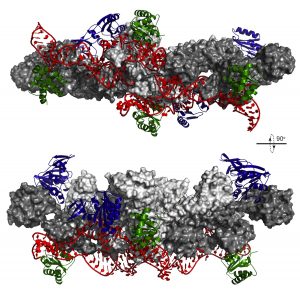
An important step in building ribosomes – the cell’s protein factories – is like a strictly choreographed dance, scientists at the European Molecular Biology Laboratory (EMBL) in Heidelberg, Germany, have discovered. To build these factories, other ‘machines’ inside the cell have to…
SCIENCE & TECHNOLOGY
2013
sciencescience-technology
6 January 2013
A research team of scientists from EMBL Grenoble and the IGBMC in Strasbourg, France, have, for the first time, described in molecular detail the architecture of the central scaffold of TFIID: the human protein complex essential for transcription from DNA to mRNA. The study, published today…
SCIENCE & TECHNOLOGY
2013
sciencescience-technology
2 August 2012
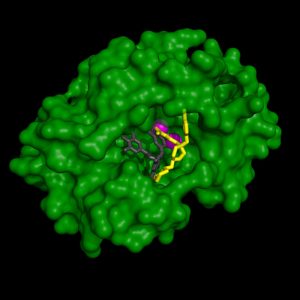
Researchers at the European Molecular Biology Laboratory (EMBL) in Grenoble, France, have determined the detailed 3-dimensional structure of part of the flu virus’ RNA polymerase, an enzyme that is crucial for influenza virus replication. This important finding is published today in PLoS…
SCIENCE & TECHNOLOGY
2012
sciencescience-technology
21 June 2012
Savira pharmaceuticals GmbH, a spin-off of the European Molecular Biology Laboratory (EMBL) based in Vienna, Austria, has signed a collaboration and license agreement with Roche, thus further strengthening the links between fundamental research and major pharmaceutical development companies. This…
SCIENCE & TECHNOLOGY
2012
sciencescience-technology
23 February 2012
Breakthroughs in biomedical science are a step closer today, with the launch of a new distributed research infrastructure for the science of structural biology: Instruct. The launch of Instruct will give academic and commercial scientists across Europe access to a full portfolio of integrated…
SCIENCE & TECHNOLOGY
2012
sciencescience-technology
13 October 2011
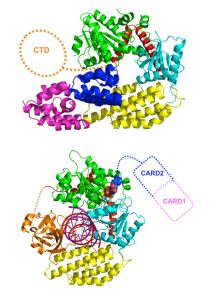
When a thief breaks into a bank vault, sensors are activated and the alarm is raised. Cells have their own early-warning system for intruders, and scientists at the European Molecular Biology Laboratory (EMBL) in Grenoble, France, have discovered how a particular protein sounds that alarm when it…
SCIENCE & TECHNOLOGY
2011
sciencescience-technology
12 December 2010
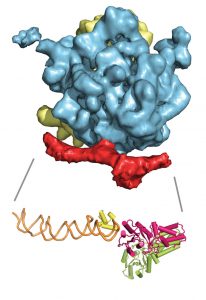
Like an overprotective parent on the first day of school, a targeting factor sometimes needs a little push to let go of its cargo. Scientists at the European Molecular Biology Laboratory (EMBL) in Grenoble, France, have visualised one such hand-over. They were the first to determine the structure…
SCIENCE & TECHNOLOGY
2010
sciencescience-technology
26 January 2010
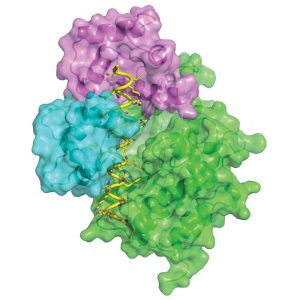
Cells rely on a range of signalling systems to communicate with each other and to control their own internal workings. Scientists from the European Molecular Biology Laboratory (EMBL) in Hamburg, Germany, have now found a way to hack into a vital communications system, raising the possibility of…
SCIENCE & TECHNOLOGY
2010
sciencescience-technology
8 November 2009
Much as adrenaline coursing through our veins drives our body’s reactions to stress, the plant hormone abscisic acid (ABA) is behind plants’ responses to stressful situations such as drought, but how it does so has been a mystery for years. Scientists at the European Molecular Biology…
SCIENCE & TECHNOLOGY
2009
sciencescience-technology
30 September 2009
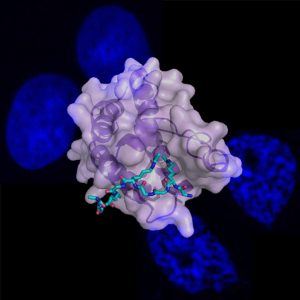
In the quest for speed, olympic swimmers shave themselves or squeeze into high-tech super-suits. In the body, sperm are the only cells that swim and, as speed is crucial to fertility, have developed their own ways to become exceptionally streamlined. Scientists at the European Molecular Biology…
SCIENCE & TECHNOLOGY
2009
sciencescience-technology
26 June 2009
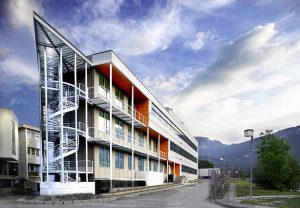
On June 26 2009 the joint international Unit for Virus and Host Cell Interactions (Unité Mixte Internationale) was formally established in Grenoble. The unit is run jointly by CNRS, the Grenoble outstation of the European Molecular Biology Laboratory (EMBL) and the Grenoble University Joseph…
LAB MATTERS
4 May 2009
Most cellular processes are carried out by molecular machines that consist of many interacting proteins. These protein complexes lie at the heart of life science research, but they are notoriously hard to study. Their abundance is often too low to extract them directly from cells and generating…
SCIENCE & TECHNOLOGY
2009
sciencescience-technology
4 February 2009
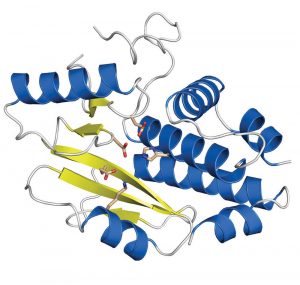
Influenza is and remains a disease to reckon with. Seasonal epidemics around the world kill several hundred thousand people every year. In the light of looming pandemics if bird flu strains develop the ability to infect humans easily, new drugs and vaccines are desperately sought. Researchers at…
SCIENCE & TECHNOLOGY
2009
sciencescience-technology
4 May 2008
Influenza is currently a grave concern for governments and health organisations around the world. Now one of the tactics used by influenza virus to take over the machinery of infected cells has been laid bare by structural biologists at the EMBL, the joint Unit of Virus Host-Cell Interaction of…
SCIENCE & TECHNOLOGY
2008
sciencescience-technology
25 February 2007
In 1918, 50 million people died during a worldwide influenza pandemic caused by mutation of a bird-specific strain of the influenza virus. Recently H5N1, another highly infectious avian strain has caused outbreaks of bird flu around the world. There is great concern that this virus might also…
SCIENCE & TECHNOLOGY
2007
sciencescience-technology
16 June 2006
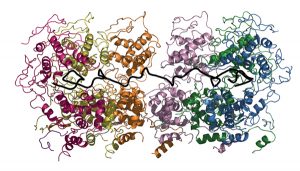
Ebola, measles and rabies are serious threats to public health in developing countries. Despite different symptoms all of the diseases are caused by the same class of viruses that unlike most other living beings carry their genetic information on a single RNA molecule instead of a double strand of…
SCIENCE & TECHNOLOGY
2006
sciencescience-technology
10 January 2006
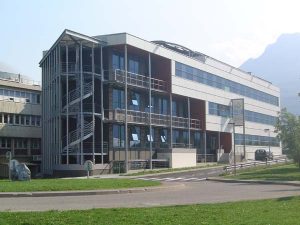
On Friday, 13 January 2006, the new Carl-Ivar Brändén Building (CIBB) will be inaugurated on the Polygone Scientifique Campus in Grenoble, France. The CIBB will be operated as a collaboration between major international and national partners based in Grenoble and is a further step in the…
LAB MATTERS
No results found






































































































































































